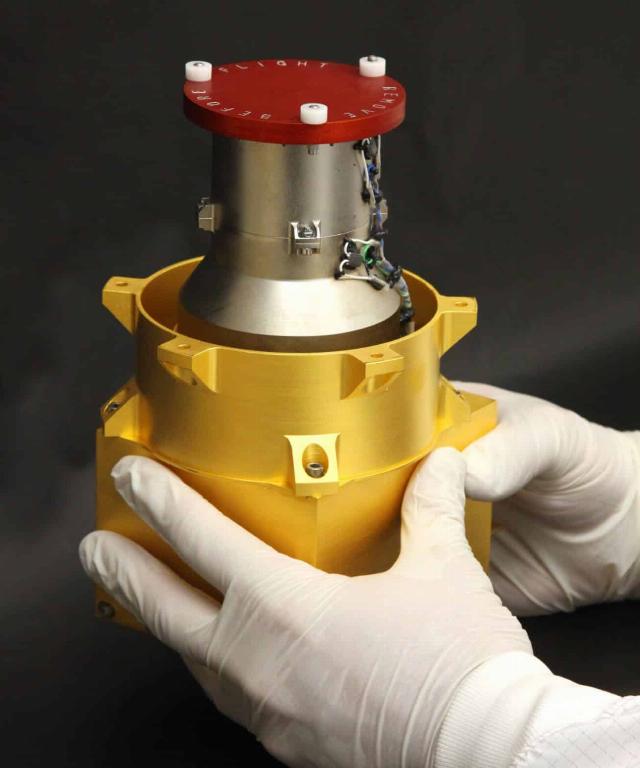Solar radiation in interplanetary space is one of the serious problems for manned space exploration. The flight to Mars lasts for many months, and it is not yet possible to predict a major solar event. Nevertheless, scientists have found a way to promptly notify the crew of the beginning of such an event and give the astronauts time to hide from the peak dose. As it turned out, a device that is already successfully operating on Mars can help in this.
According to the Russian Institute of Biomedical Problems, which monitors the health of astronauts, the annual dose on the International Space Station is about 220 millisieverts. Russian space doctors "allow" an astronaut to spend a total of about four years in orbit during his entire career.
Their colleagues from NASA are guided by approximately the same conditional boundary: no more than 600 millisieverts for all the time spent in space. A few years ago, as many as four sievers in a lifetime were considered the norm in cosmonautics.
Meanwhile, it is estimated that in six to nine months of flight to Mars and the same amount back to Earth, the astronaut will receive 930 millisieverts, and this is without taking into account the time spent on the surface of Mars with its thin atmosphere and extremely weak magnetic field. According to Russian radiobiologists, the radiation level on Mars is about the same as on the ISS.
In addition, these 930 millisieverts imply that there were no particularly serious solar events during the flight — flares or coronal mass ejections, that is, the eruption and departure of an impressive amount of solar plasma into the surrounding space. This causes a so-called solar-proton storm: protons, electrons, and even, for example, entire helium nuclei fly from the sun with tremendous energy.
All this can be very dangerous for human health. Doctors do not exclude even the risk of acute radiation syndrome, but in any case they consider long-term consequences very likely, namely the development of cancers, disruption of the central nervous system, and decreased motor functions.
Doctors are convinced that it is necessary to create special spacesuits for astronauts, which can be equipped with emergency equipment if necessary, and shelters will be needed on Mars itself, primarily underground ones: the soil is an excellent natural protection from radiation.
At the same time, astronauts should have at least some time left to get ready or take cover. A team of scientists from Germany, the USA and China described how to ensure this reserve in a recent article available on the preprint server at Cornell University (USA).
The researchers calculated that the signal for urgent action for the crew should be a message that the radiation level is 25 percent higher than the background. And a device such as the Radiation assessment detector (RAD), a radiation assessment detector, on board the Curiosity rover, can notify about reaching this level.

The RAD (Radiation assessment detector) detector installed on board the Curiosity rover
Image source: NASA/JPL-Caltech/SwRI
It started working a few days after the launch from Earth, in December 2011, and now it has been monitoring radiation on Mars for the second decade. The device punctually takes measurements every 15 minutes, and the data collected in this way over the years has formed an interesting graph on which all the "solar energy particle events" are clearly visible. During the flight in interplanetary space, there were five of them, and by now there have been 16 during the years of work on the planet.
The researchers reviewed all the measurement data for the five days before each event. It turned out that the device clearly shows the beginning of a solar storm as a 25 percent increase in dose before the event reaches its maximum strength. There is a different amount of time to take self-defense measures each time: sometimes two to three hours, and sometimes only a couple of minutes.
Fortunately, the stronger the flow of solar particles, the longer it "gathers", that is, it increases to a peak and, accordingly, gives astronauts more time to "prepare for defense." In some cases, it is estimated that you need to spend more than three or even four days in a shelter or a special suit.
Based on the results of this study, it became obvious that such a device as the RAD is absolutely necessary on board a manned spacecraft flying to Mars or from Mars to Earth, and it needs to be done so that when detecting a 25 percent excess of the normal radiation level, it sends some kind of signal.

